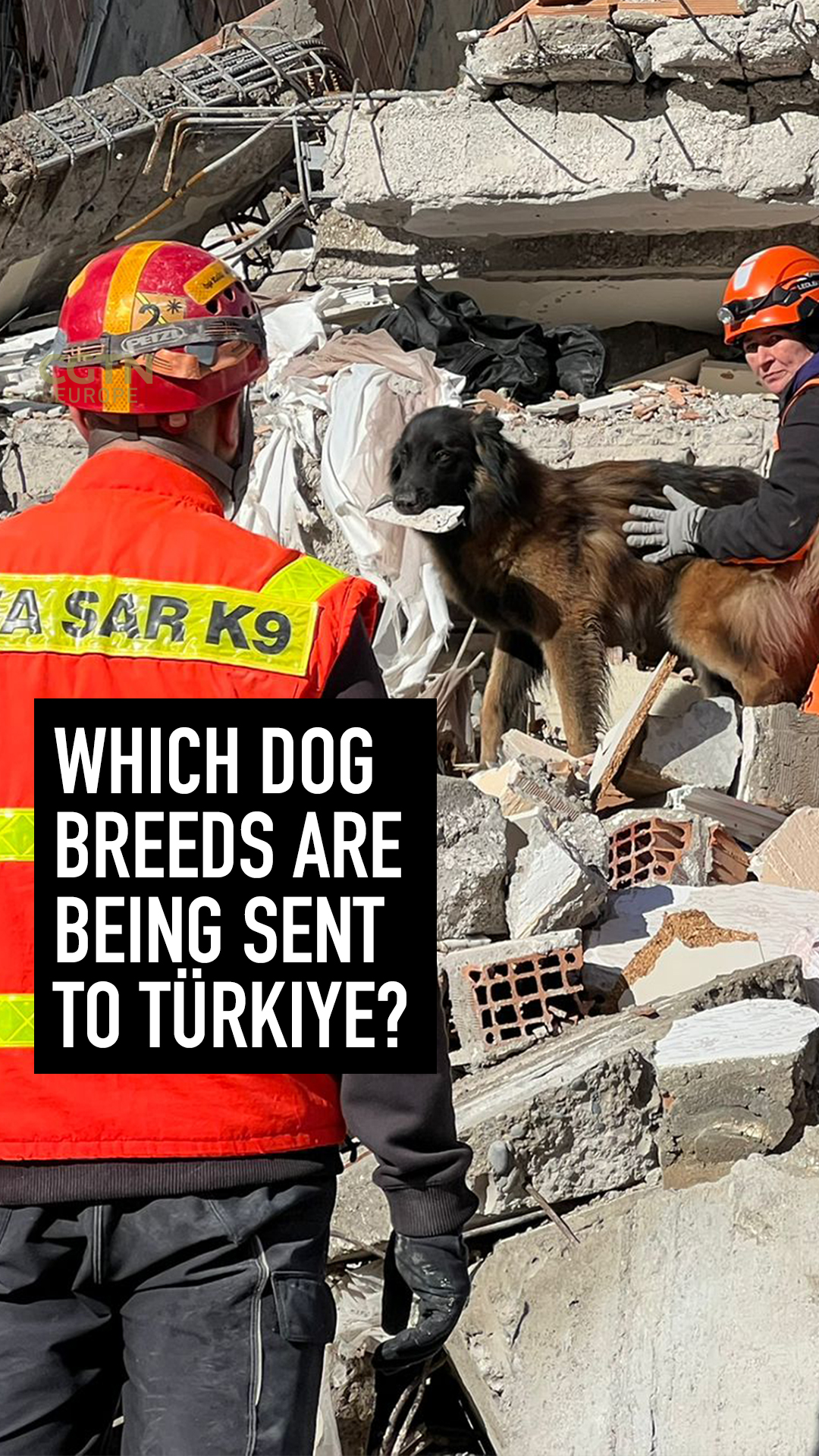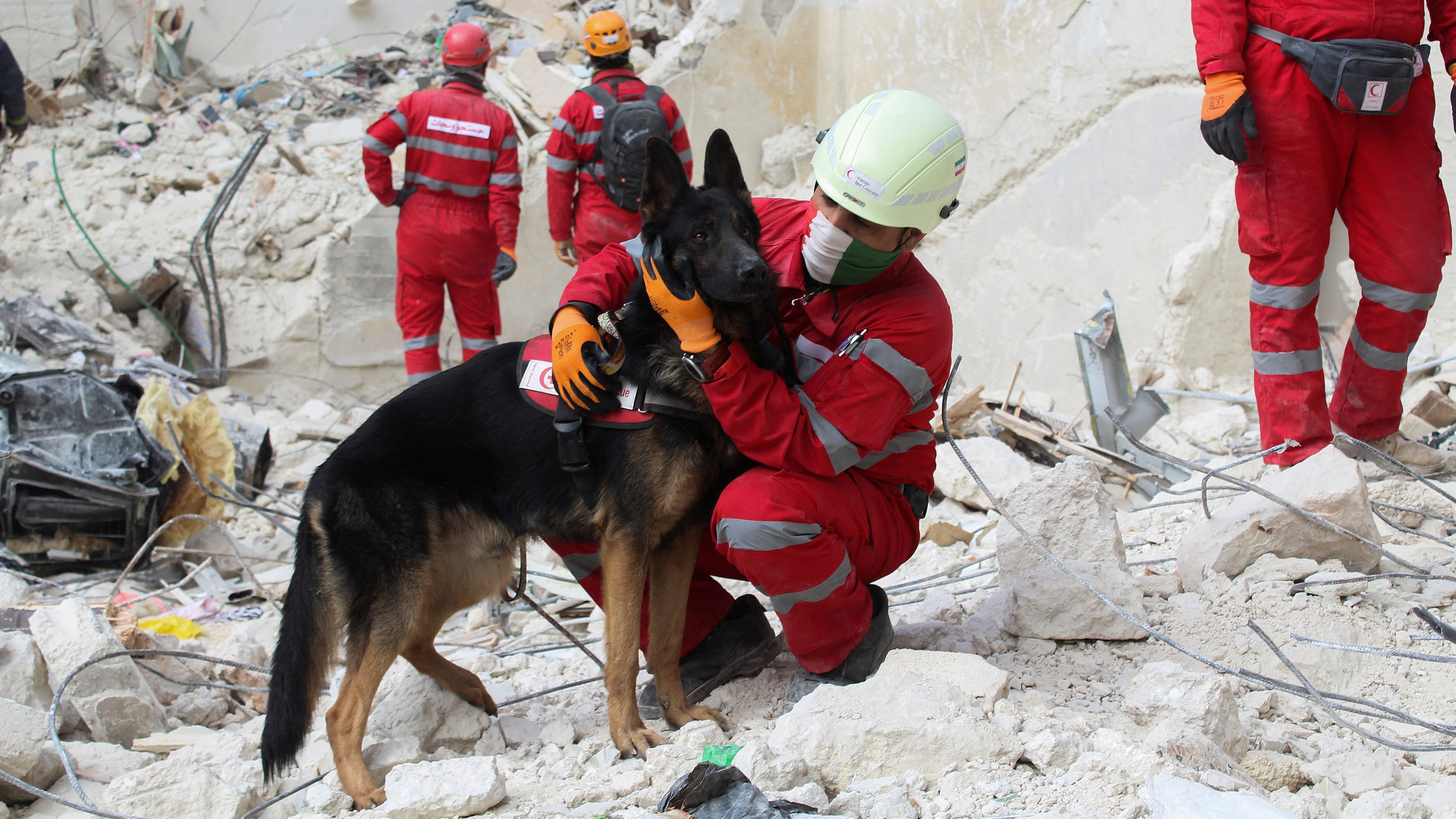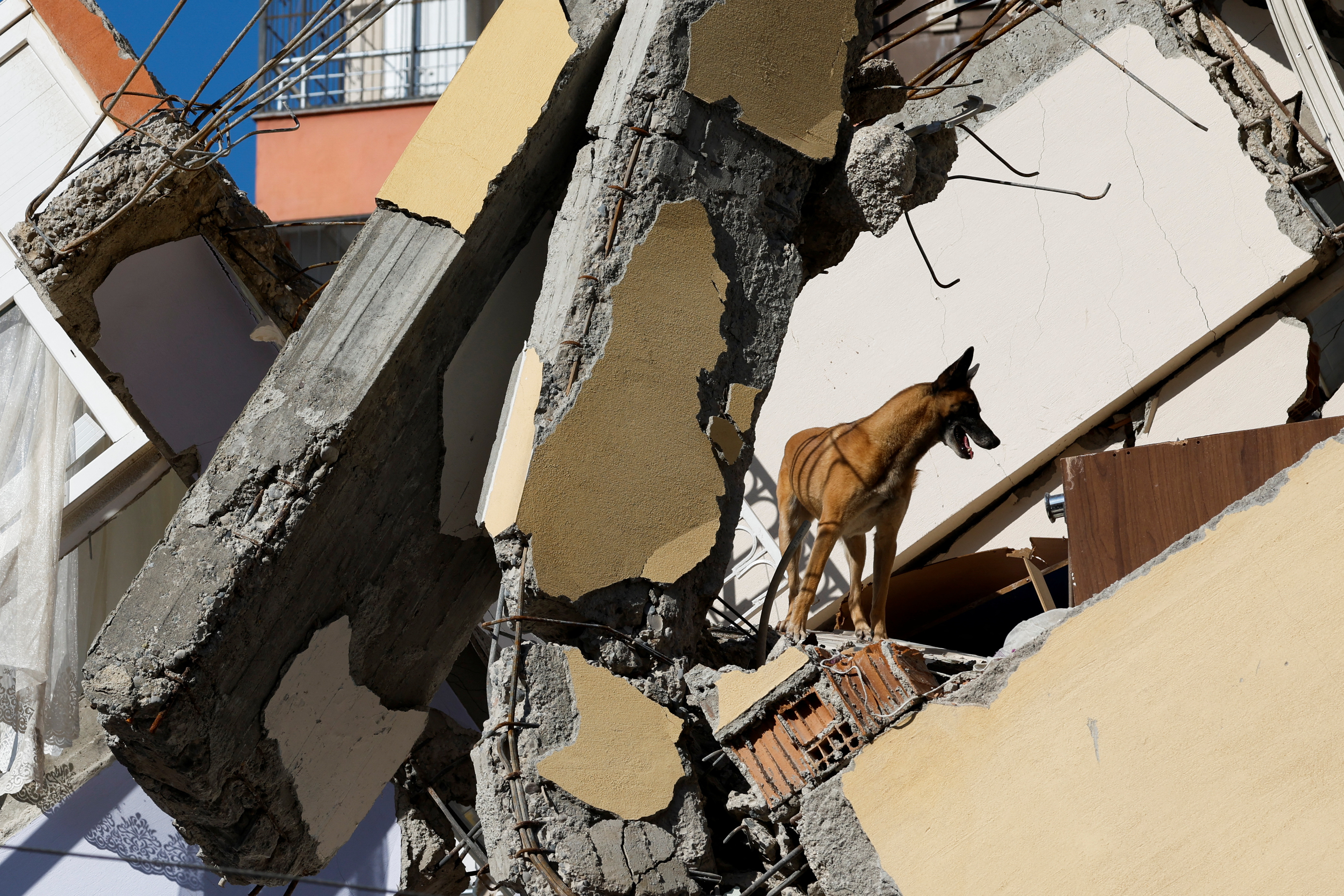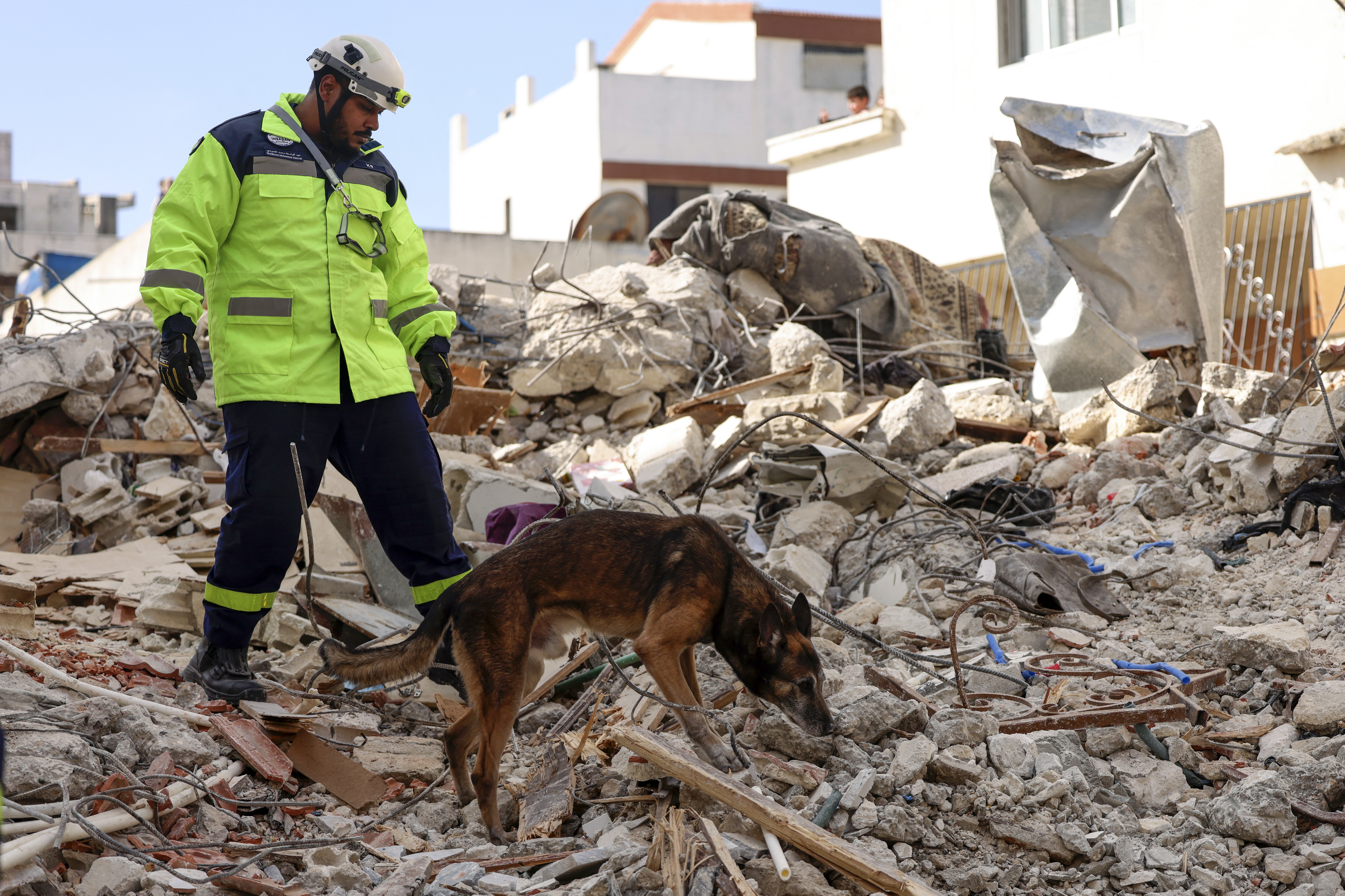01:24

They can be seen carefully treading through towering piles of rubble and debris, searching for the faintest signs of life.
A short bark to their handler signals another flash of hope – that somebody may have survived a catastrophe.
Amid the devastation wrought by last week's devastating earthquake in Türkiye and Syria, search-and-rescue dogs have been an integral part of the hunt for survivors. As engineers, paramedics and soldiers from around the world raced to aid recovery efforts, they were accompanied by dozens of rescue dogs and their handlers.
The specialist teams include 16 of Mexico's famed search-and-rescue dogs, who won people's hearts for saving lives in the aftermath of a deadly earthquake in 2017.
But which dog breeds are best suited to working in earthquake zones?
Experts agree that some breeds come out on top – namely Belgian malinois, labradors, retrievers and border collies.
"These dogs are quite successful when you train them, and are used worldwide for search and rescue," says Linda Hornisberger from the Swiss NGO REDOG, which has sent two teams with a total of 14 dogs and 22 people to Türkiye.
"They like to work, they go on and on working, they are mid-size, and can move well on rubble. That's mainly why these breeds get chosen."
Earlier this year, a Finnish study suggested that Belgian malinois performed best when it came to certain cognitive skills, making them exceptionally intelligent compared to other breeds.
Golden retrievers, border collies and labradors also did well in the researchers' tests.

A member of the Iranian rescue team holds a rescue dog as he stands amid the rubble of a damaged building in Aleppo. /Firas Makdesi/Reuters
A member of the Iranian rescue team holds a rescue dog as he stands amid the rubble of a damaged building in Aleppo. /Firas Makdesi/Reuters
But experts have cautioned that dogs' performances in earthquake zones also depend on their training and temperament.
"In a collapsed building environment, you don't want a dog running all over the rubble as they might cause another collapse, or get injured," says Stuart Kenny, the chair of the National Search and Rescue Dog Association (NSARDA) in the UK.
"The dogs need to minimize movement, stay where they are and bark at their handler (when they find something), so that the handler can move carefully over the collapsed structure," he says.

A rescue dog named Hope from International Search and Rescue Germany searches for survivors in Kirikhan, Türkiye. /Piroschka van de Wouw/Reuters
A rescue dog named Hope from International Search and Rescue Germany searches for survivors in Kirikhan, Türkiye. /Piroschka van de Wouw/Reuters
The dog also needs to be happy with working long, tough hours. And they need to have the right handler.
"Training dogs take a lot of time and people don't have the time to invest," said Hornisberger.
Jonny Caughey, a deputy team leader at K9 Search and Rescue NI, says both dogs deployed by his organization have been trained to work in urban collapse environments. The team arrived on Friday night, five days after the first quake struck.
Caughey says they detected sounds under the rubble that indicated there were survivors. But by the time the rescuers managed to reach them – around "seven stories deep", according to Caughey – it was too late.

An Emirati rescuer and dog search for victims in the regime-controlled town of Jableh in the province of Latakia, northwest of the Syrian capital. /Karim Sahib/AFP
An Emirati rescuer and dog search for victims in the regime-controlled town of Jableh in the province of Latakia, northwest of the Syrian capital. /Karim Sahib/AFP
Getting canines ready for rescue operations can be difficult. It can take two to three years to train a dog and its handler, most of whom are not paid and work other jobs, said Kenny from NSARDA.
Specialist training is also required for disaster areas. The Swiss army allows rescue dogs to train at military sites, but REDOG's Hornisberger says it can be a big problem in other countries.
"We need support from local government, building agencies, army and civil defence so that they give us the possibility worldwide to train on difficult terrain," she says.
Subscribe to Storyboard: A weekly newsletter bringing you the best of CGTN every Friday